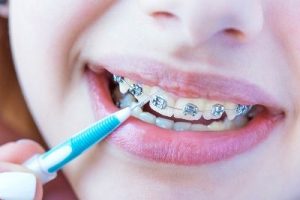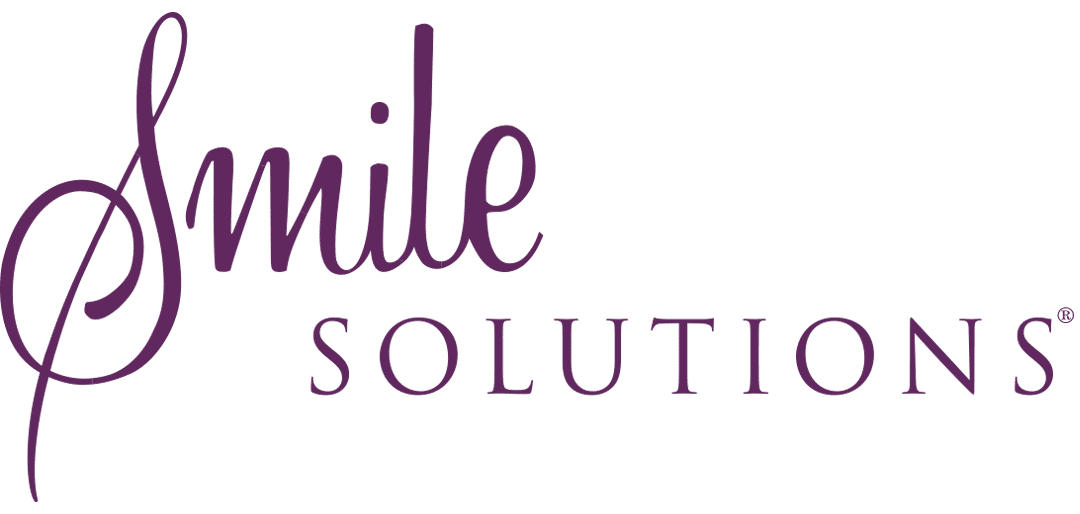Caring for your conventional braces
Has your orthodontist suggested conventional braces to straighten your teeth?
Here are all your questions about this treatment answered.
What are braces made up of?
Conventional braces consist of two main parts: a series of brackets (either metal or clear) attached to the surface of each tooth, and an arch wire running through slots in the brackets which slowly moves the teeth when tensioned.
How should I care for my teeth while wearing braces?

Excellent oral hygiene is crucial for anyone wearing conventional braces. You should take particular care to ensure the areas around your braces and along your gum line are kept free from plaque.
We recommend you use your new orthodontic toothbrush, along with Superfloss and Pixsters, after snacks and meals. Superfloss has a stiffened end that can be threaded between your teeth and the arch wire. You then use the spongy section to floss large spaces and the smith end for the smaller ones.
In addition, you can use Pikster inter-dental brushes to clean between your teeth and the arch wire. With bendable heads, these can easily reach around to your back teeth and will last up to two weeks when properly rinsed after each use.
If you are finding it hard to clean your teeth or notice that your gums seem puffy or bleed easily, we recommend more frequent visits to your dentist or hygienist for professional hygiene therapy.
What happens if a part of my braces breaks or comes loose?
You need to take care while wearing your conventional braces to ensure brackets and arch wires stay in place. This is often caused by eating foods that are particularly crunchy or sticky. This is not an emergency and commonly happens within the first weeks of treatment. If this occurs, make an appointment with us and we will repair your braces for you.
We suggest you avoid activities that may put your teeth or braces at risk, as any associated mishaps will increase the length of your treatment.
Poking wire: You can use tweezers to place the wire back into place. If doing this and using wax doesn’t help, clip the wire behind the last bracket with your nail clippers.
Broken bracket: A bracket is considered broken if it has come away from the tooth, spins, or moves up and down the wire. This is not an emergency and can be fixed at your next appointment. If the bracket at the very back happens to come off, the wire will feel long. Try trimming the wire to make it more comfortable.
Broken Power Chain: If there is a tear in the power chain do not worry as the remainder of the elastic power chain is still active and it is not an emergency to have this repaired straight away. However, if you have an appointment currently to have your braces removed and the power chain has broken please call the practice.
Elastic Hook: If the hook (bracket) which helps connect your elastics has fallen, stop wearing elastics all together and inform your orthodontist at your next appointment.
Will my braces hurt?
Initially, it may take some time for your mouth to adapt to the feel of your conventional braces and you may find that they rub on your lips and cheeks. Mouth soreness and ulcers are common when braces are first applied and can occur at any time throughout treatment. If irritation does occur, mould a piece of orthodontic wax into a tiny ball and use it to cover the part of your braces causing the problem. This will create a barrier that will help the affected area to heal. Drying the area first will help the wax to adhere and stay in position for maximum effect.
When they are first fitted, and following each adjustment visit, your braces will feel tight, and this may make your teeth and gums feel a little tender. The tightness and tenderness mean your teeth are moving – and these sensations may last up to a week.
During this time, we recommend that you eat soft foods that do not require much chewing. Over-the-counter pain management medication can also help, if required.
Do I still need to see my general dentist now that I have an orthodontist?
Your orthodontist will care for your braces and make sure everything is going according to plan, while your general dentist will make sure your teeth stay healthy and clean.
Now that you have your conventional braces fitted, it is very important that you visit your general dentist every six months (or as advised by your dentist) for a check-up and a clean. This will ensure that your mouth is kept nice and healthy.
Can I wear a sports mouthguard with my braces?
Sports mouthguards may be worn over your conventional braces, but frequent use is discouraged as it will hinder the desired movement of your teeth. Mouthguards that are suitable for use with braces are available at our office, and they are also sold in some sports stores.
